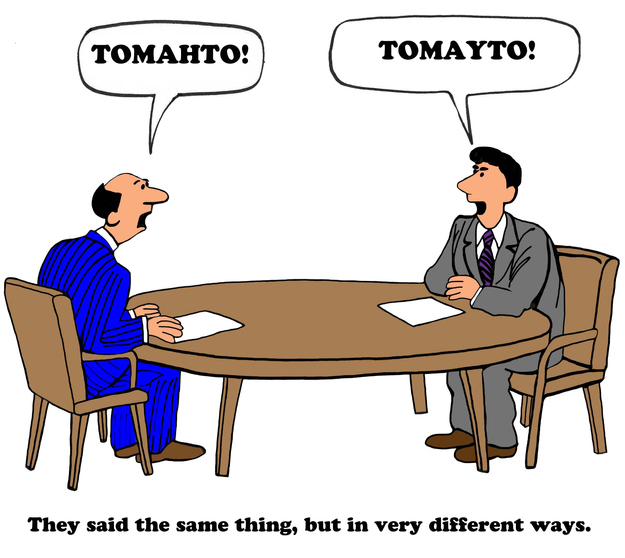It’s been more than a year now that we’ve been doing ongoing SEO work for some of our clients. As a B2B service provider, we take this work seriously and celebrate the successes regularly!
Over the past year, we’ve come to learn a great deal about what are the top SEO mistakes that backfire progress that’s been made. Sometimes, it’s as easy as clients going into their own website to make changes – and they end up unknowingly reversing the positions we’ve helped them gain.
Other times, it’s a simple misconception about how SEO works that cause people to do what they think is right, only to see it completely fall flat.
Before we get into the details, we want to make it clear that we don’t blame anyone! Especially in the world of entrepreneurship, everyone is just doing their best to continuously grow.
But of course, no one likes seeing a day of no progress and a declining statistic. That’s why we figured it is time for us to share our observations with everyone.
So if you’re wondering how to avoid the top SEO mistakes that backfire on a website’s visibility so you can avoid them yourself, read on…
Top SEO Mistakes That Backfire
Mistake #1:
Thinking SEO is a One-Time Project

Actual screenshot of one of our clients and their SEO campaign. What’s shown is their Visibility (%) province-wide over a 3-month period. This client started with less than 1% visibility. The campaign work began in March of the same year and their website underwent several edits to finally achieve the largest bump noted.
Most of our first-time clients don’t understand the full scope that is research, monitoring, and maintenance – and why it’s necessary. So people are often shocked to learn that:
Positions change every day.
Not every single ranking changes all the time, but some do. So if you get a report with positions, they are only current as of the date noted on the report; they’re not final and set in stone.
It’s not uncommon to log in one day to see a visibility bump, then log in the next day to see a visibility drop. And then, the week after that, see it reverse back upward.
Sadly, an upward then downward trend is also entirely possible. It’s always changing, which is why ongoing monitoring – with needed changes as the trends become obvious – is essential.
It’s also noteworthy to point out that search engine positions are based on certain areas. For example: You can be #1 in your city/town, #23 in your province/state, and #112 in your country for one keyphrase. It’s also possible to be in the Top 10 locally for service-related keywords, but not be in the Top 50 on a province/state-wide or country-wide search scale. Your target area is always good to know when work begins so you see realistic figures that matter most to you.
Achieving X number of Top 3 Positions does not mean no further changes are needed.
Perhaps if you’re perfectly happy with where you are right now, this could be true… But keep in mind the point eluded to above – you might not maintain those positions.
Anyone else that does their SEO homework, especially your competitors, will be able to see what you’re ranking for and replicate it themselves. This is one part of the “why” and “how” positions change every day.
Not to mention: We like to think big! If you’re getting X number of Top 3 positions, then why not try to get more?
Online trends are always changing, just like life itself.
This is exactly why SEO heavily involves research, monitoring, and maintenance on a repeat cycle. The words you use in your marketing materials may work perfectly there, but they may not be the keywords that people actually search for online. A trending question or headline for your services can very well change as the seasons change. This means that the actual phrasing used will vary.
In fact, we have a story about a client who landed multiple Top 10 positions in 2018 but didn’t opt for further SEO services. So in 2023, they asked us why they were no longer on top of their competitors. It turned out that their content no longer contained high search volume keywords; because the search trends changed. This called for a complete content update sitewide.
The Lesson: What may have been “trendy” this year might not be trending next year.
Gaining a better understanding of these major points is important because it can otherwise lead to SEO mistakes. Another shocking discovery for business owners is realizing their positions change as new websites are created and existing ones are updated. This is also to say if new competitors emerge and do a good job at SEO, your positions might fluctuate and some may get pushed a little further down the list.
All of these realizations cite a need to review research and make any needed changes. This is why SEO needs to be ongoing work if it’s important for you to be as searchable as possible.
Mistake #2:
Believing your verbiage is their verbiage

This sub-topic is the most significant learning curve for businesses. And we get it – it’s hard to change verbiage since your business has long since been your vision.
You know what to say, how to say it, and it’s usually a part of you as a person too.
What we sometimes find while doing keyword research is a need to reapproach existing website content.
This is usually an industry-specific challenge, but not always. It can also be a suggestion for anyone that has a simplified website which doesn’t provide enough text.
Consider for a moment if your business offers specialized services — wherein service name verbiage is technical or not commonly/widely known — and if there is little to no explanation on it. What we often find is that no one is organically finding these websites. In one particular case of note, we discovered there’s very little search volume for the service names. So how do people find this company when they need it?
Unfortunately, in these cases, the answer is that they don’t. This means there’s a missed opportunity to be discovered by potential clients. Our next step is to ask “What questions does a potential client have for which you can suggest your products/services as a solution?”.
Why does this matter? Because in that particular case that we worked on, we found a long list of high search volume questions that were related to the low search volume service names. What this told us is that people really didn’t know the service that they needed to look for.
How this gets improved is by changing the narrative that is the content. And by that, we mean changing it to include text that is more focused on those questions. It’s akin to taking a step back and realizing that you’re the expert that needs to explain to the general public why they need your products or services.
But it’s one thing to know this, and it’s another to implement it, which leads us to the next point…
Mistake #3:
Believing simply mentioning a keyword = success

There once was a time when people could spam keywords to index a website for exactly what they wanted to be known for. This is no longer true. In fact, mentioning a keyword too many times gets your webpage interpreted as spam.
On the flip side of this, not mentioning a keyword enough – or not having it in enough places of note – won’t get it appropriately indexed. So there is a guideline and strategy for keyword use.
The crawlers that read and decide how to index your website are the determiners of this, so it’s important to follow their rules. Also using the same keyword across multiple pages confuses these crawlers – as they won’t know which page should be indexed for what. This doesn’t produce great results unless there’s a clearly defined difference in the keyphrases.
The bots that scan your website and decide how and where to index it within search results have been given “measurements” to look for. These include, but aren’t limited to:
Is there a relevant keyword in the title and description that matches the pages’ content?
This is why we like to choose a ‘main keyword’ – usually the highest search volume with a low-medium competition score – to focus on. Once this is determined, we avoid repetitive use of it on other pages. For every page, make sure this focused keyword is mentioned a sufficient amount of times throughout the page. To boost the effort, relative secondary keywords should be there to support it.
Are headings used appropriately with relevant keywords?
The verdict isn’t clear on whether or not it’s critical to only have one H1 per page. However, we’ve personally seen a significantly positive impact by fixing a website that did use two per page. So if you’d rather play it safe, know that having more than one per page also flags an error on a Site Audit report.
Any subsequent headings on a page – of which you should use a variety of keyword(s) within – should be an H2. While subject to even more experimentation, H3s don’t have much luck in being read for keyword indexing.. so these can be non-keyword headings where you need them.
Keywords/Keyphrases should match your selection from keyword research to work.
This is another grey area since we’ve seen both sides of this to be true. We have come to believe that it really just depends on the topic and context of it. We’ve used a minor variation of a researched keyword (literally adding words like “a” and “and” within the phrase when it wasn’t there) and have seen it never get picked up. And, we’ve also seen that using alternatives to a selected keyword cause all related keyphrases to get rankings.
This is an example of how experimentation – and time – matters most to SEO work. But if you want to play it safe and make sure you get some rankings right out the gate from your first content change, stick to the exact keywords that are recommended.
Mistake #4:
Thinking short & simple is the best way

While it may make a website look cleaner to be kept short and sweet, there’s more to this story. If you’ve ever heard the phrase “content is king”, then you might have an idea of what is to be explained here… But let’s start with the basic guidelines and go from there.
For indexing purposes, a webpage should have no less than 300 words. Sometime in the recent past, it used to be 200 – but 300 is now the new minimum to meet.
And by minimum, we mean absolute minimum – and this does not include any text in your header and footer.
The reality is that these days, Google is actually preferring web pages that offer a lot of text. Regardless of whether or not it’s a blog post, the more the better.
One way to look at this is how customers have moved on from getting what’s cheap and easy, to becoming loyal to brands with purpose and results. These days, buying decisions are more often driven by the who, how, and why behind a company. So if a company goes all out explaining all of this on their website – and offers oodles of information to back them up – then it’s likely they show up before their competition.
But there is a more measurable explanation behind why you should have more text content. It’s because the more content you have published, the more keywords your website can show up for.
So how do you know what word count you should hit?
In all honesty, this depends on the topic title and your choice of main keyword…
Teams like ours utilize a content optimization tool that will tell us what word count to hit. This is just a suggestion, but it is an average that’s based on all other available content that’s already published. Why this matters though is that it’s showing you what your competition is. If your word count is significantly lower than that, then you cannot be shocked if you don’t get indexed in the Top 20.
Word counts on page content we’ve optimized have ranged from 525 (for a web page) to 1928 (for a blog post). So yes, it varies greatly and cannot be put into a simple guideline. Without the assistance of such a tool, the only surefire way to judge this is to search the title you want to use and look at the #1 search result. It’s only an indicator to have a look at it and actually see what you’re up against (so to speak).
This just goes to show that while SEO is important for making sure your company’s website is more easily found, it’s neither a simple nor overnight fix. And while you can achieve a quick visibility boost with paid ads, it’s always a good idea to increase your organic search visibility. In fact, after just 6 months of SEO work for one of our clients, we received feedback that the organic traffic conversions from those efforts exceeded what they had achieved running paid ads the previous year. If that is enough to find out what we can do for you, reach out for a consultation call. But for even more tips – on the top misconceptions about SEO work – check out the second part of this blog series.
